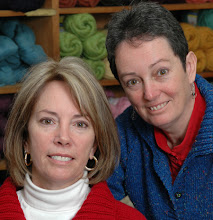What do you do on your holidays? I still knit. Hobby and work are all combined for me. Sometimes it seems I can never get away from it but most of the time I wonder why I would want to.
To make a change, this summer I'm working on machine knitting. It's a totally different breed of knitting. The only cross-over is some comfort with the yarn. Everything else seems quite different.
I wanted to work a saddle shouldered sweater from the top down. This is my mock-up on the machine.
1. I knit it bottom-up, which screws with my head since I'm not used to working this way any more. That was kind of fun. I drew it like I would handknit it from the top and then worked out the rows from the bottom. I did it bottom up because it seemed easier to decrease every row. When I handknit this I want to work a double increase every second row. Now I have to figure out what double increase would work best.
2. I worked it in two colours so I could really see the seamline between the saddle and the sleeve.
I'm so happy this worked out. Now I'm going to get started on a handknit.
Deb
P.S. Thanks t_a and Sharon for your comments on your experiences with machine knitting. It is very different isn't it!? It does do stockinette stitch very well and I'm having fun knitting with fingering weight cotton at a much looser than I would by hand.













.jpg)




.jpg)
+(425x640).jpg)
.jpg)
.jpg)




